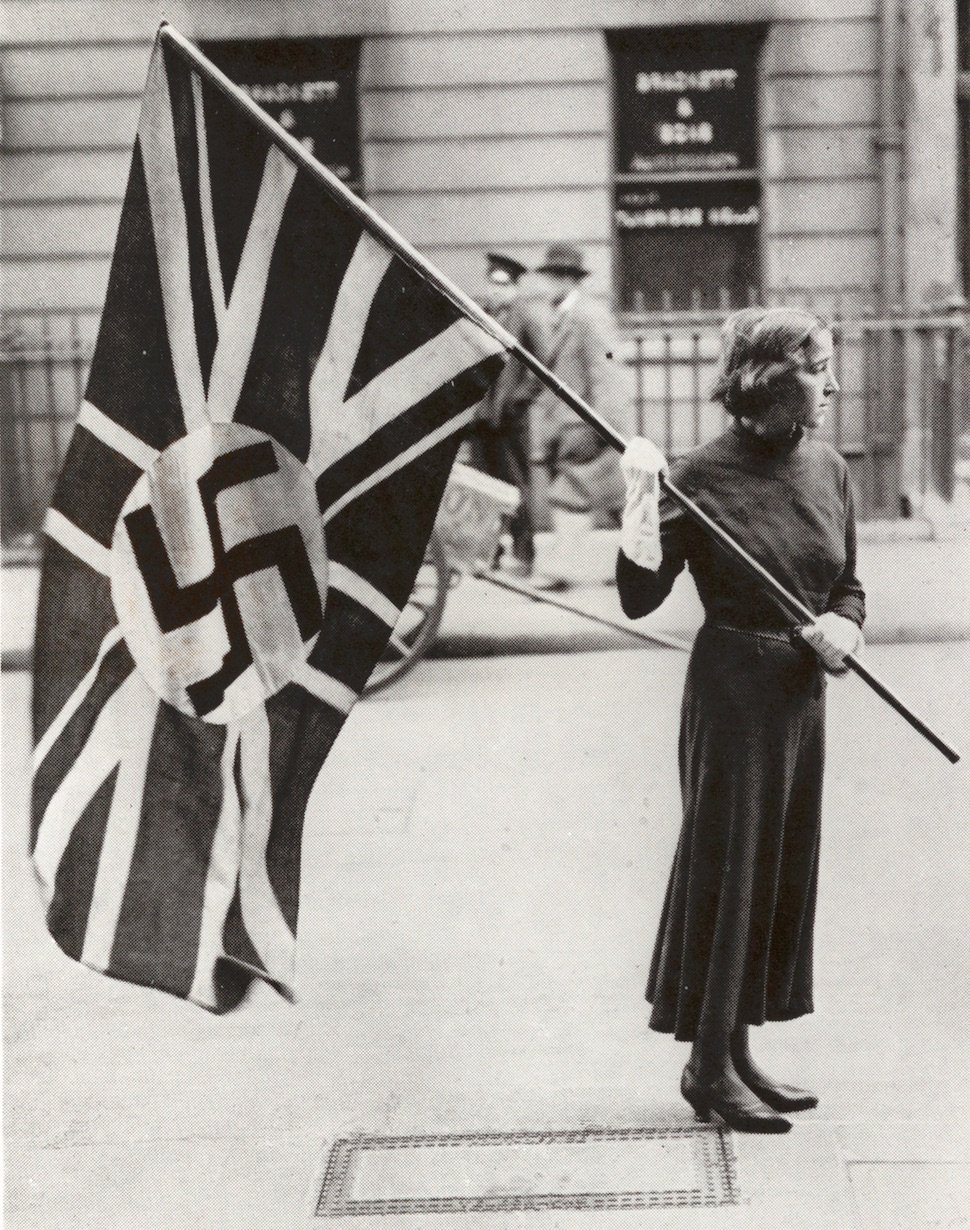Exhibition Review: This Fascist Life by the Wiener Holocaust Library
The Library’s compelling exhibition reflects upon the destructive phenomenon’s first manifestations and the activities of ordinary members of interwar fascist movements.
Students at the University of Vienna saluting in a torchlight parade together with the Rector, Hans Übersberger, in 1931. ÖNB. Bildarchiv. H780 B.
Founded in 1933, the Wiener Holocaust Library has its origins in the work of Dr Alfred Wiener, who conducted a lifelong campaign against Nazism and the persecution of Jews, becoming a central figure in the documentation of antisemitism in Nazi Germany. The fruit of his labour is the world's oldest archival collection on the Nazi era and the Holocaust, comprising a myriad of records and artefacts that appear at regular exhibitions in the Library, which today sits by Russell Square after its relocation from Devonshire Street in 2011.
The Library's newest exhibition, titled This Fascist Life, is a collaboration by senior curator Barbara Warnock with Dr Roland Clark, a specialist on modern European history at Liverpool University, and Professor Tim Grady, a historian of twentieth-century Germany and the First World War at Chester University. Dr Warnock, who curates most of the Library's regular exhibitions, sometimes with funding from organisations and partnerships with co-curators, borrowed relevant material from the German National Archive in addition to the Library's own catalogue for this exhibition.
The exhibition offers a unique take on fascism at the time by not solely focusing on the lives of Nazi leaders and prominent figures, but rather, providing a lens into that of the rank-and-file of the fascist movement. Across the hall is an assemblage that chronicles the spread and influence of fascism through its manifestation in ordinary people: images depict people gathering at mass rallies and singing chants that build camaraderie, a datalog by the Centre for Analysis of the Radical Right displays detailed information on members, and posters show individuals bearing Nazi flags and swastikas. This Fascist Life presents a new perspective on the events and sentiments across the rest of Europe, further diverging from and expanding on the Library's past displays, which focused primarily on that of Germany and Italy.
A distinctive artefact that stands out amidst flyers and texts in the display cases is a series of what seems on first glance to be palm-sized black squares. Closer examination of the squares' texture reveals their contents and purpose: these are charcoal printing blocks whose surfaces are etched with antagonistic depictions of Jews which would then be stamped onto paper and distributed. These blocks were moulded, cast, and mass-produced as a means of spreading antisemitic propaganda.
British Union of Fascists printing blocks, c. 1930s © Searchlight Collection, University of Nottingham.
The exhibition's features most striking to Dr Warnock were the artefacts that unveiled the movement's more extreme and unexpected elements. These include the charcoal printing blocks as well as the section 'Fascist Bodies: Sport and Leisure' which comprises a summary of fascism's manipulation of sports alongside blue-tinted photographs of youths engaging in seemingly-innocuous physical training. One of these images was of Romanian students, some with swastikas painted on their chests, toiling at a brickworks 'as a part of their summer camp activities'; another depicted rows of Danish gymnasts training under coach Niels Bukh who 'promoted Nazism through sport’. This exploitation of sports, an activity that one would not associate with fascism, reiterated the extent to which fascism permeated people's everyday activities.
Perhaps the most fascinating part of this exhibition to me was its dedication of an entire section to fascism's effect on gender roles and misogyny, an issue which still exists in our modern society. This segment, straightforwardly titled 'Female Fascists', confronts the viewer with a large image of a female supporter of the British Union of Fascists bearing a British flag adorned with a swastika. The woman's proud expression of support for the Nazi movement is particularly ironic as fascism's key values repress women. Its hyperfocus on masculinity and belief that women should have no role in politics are seemingly forgotten as soon as an election approaches. A display case within arm's reach from 'Female Fascists' showcases flyers that appeal to women and mothers for votes: a drawing of a mother and her children is captioned 'Mutter denk an uns! wählt Hitler!'; on another leaflet is written 'Deutsche Frau! Deine Zukunft.. Entscheide Dich!' Misogyny is a motif common in not only contemporary fascism but also extremist ideas and terrorism in the modern era.
Supporter of the British Union of Fascists, c. 1930s. Wiener Holocaust Library Collections.
In response to those who might claim that this exhibition's contents are irrelevant to our present society, Dr Warnock emphasises that far-right nationalist ideas of the movement at the time have forcibly influenced politics today and still pose a threat to democracies and societies around the world. Examining the growth and tactics of the Nazi movement is not only beneficial but in fact crucial to our understanding of similar far-right movements which will in turn aid our campaign against harbingers of fascism in our modern society such as racism and misogyny.
Prior to the onset of the pandemic, the Wiener Holocaust Library typically saw three exhibitions as well as some smaller-scale showings each year. Due to restrictions and limitations, however, there have only been three full-scale displays over the past 18 months. The previous exhibition which took place in early September this year centred on eugenics; past themes included Nazism and Jewish resistance during the Holocaust and at times ventured beyond the Holocaust to document other genocides such as the Darfur genocide in Sudan.
The exhibition, located in a nondescript building on Russell Square, identified by posters on its windows and fence, is open every Tuesday to Thursday from 11am to 3pm.



